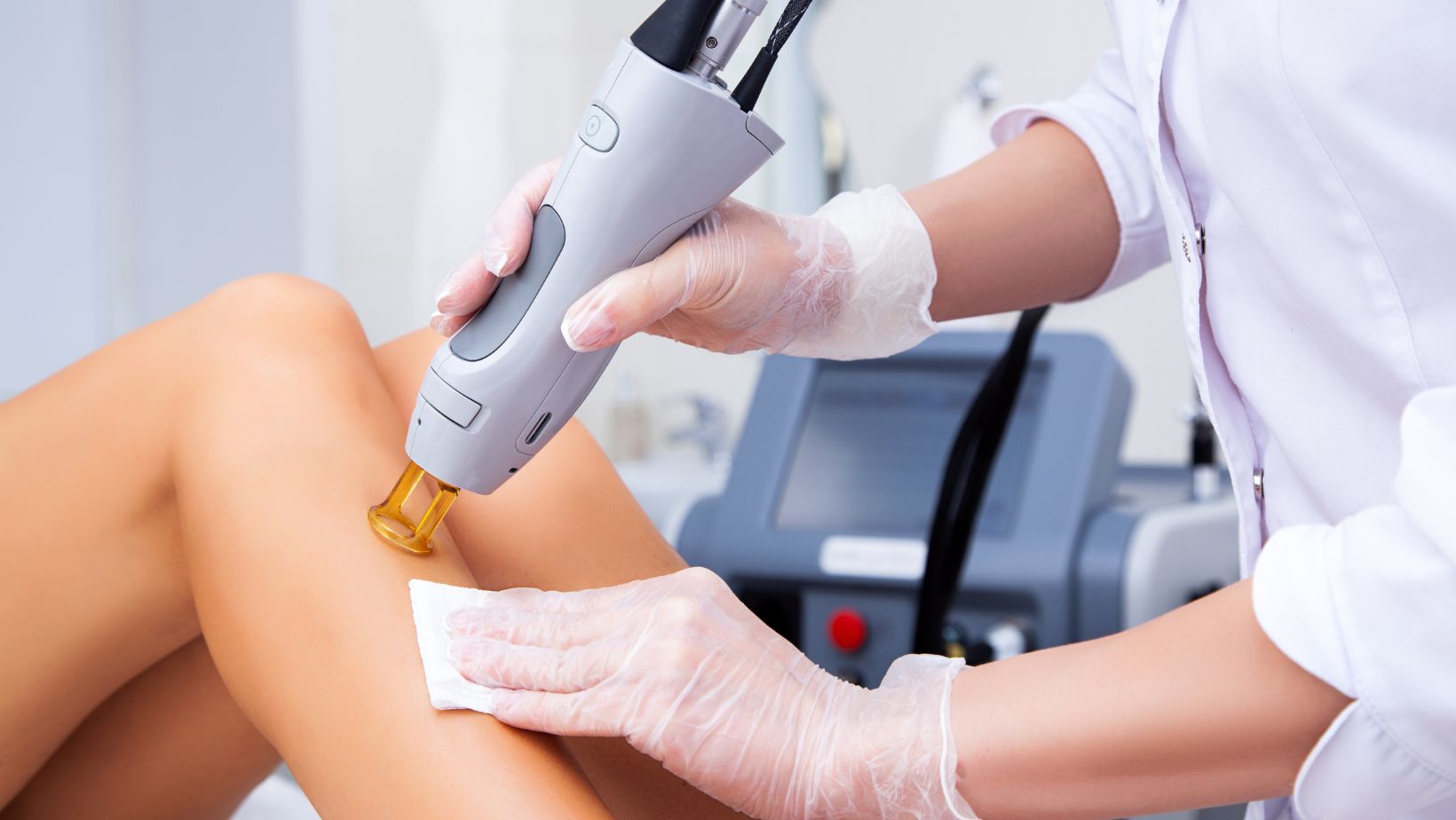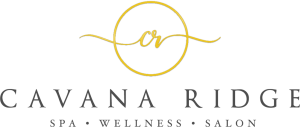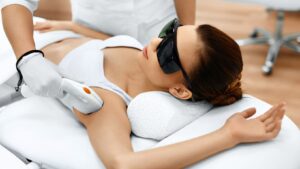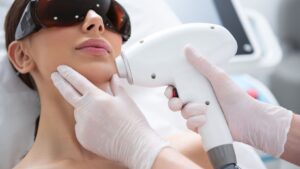
Do you dream of having silky smooth skin without the constant need for shaving, waxing or tweezing? You’re not alone! Many people struggle with unwanted body hair and spend countless time and money on temporary solutions. But what if there was a way to significantly reduce hair growth, making it nearly nonexistent? That’s where laser hair removal comes in.
This popular method of removing unwanted body hair has gained popularity over the years for its long-lasting results. In this blog post, we will discuss everything you need to know about how laser hair removal works, its benefits, and aftercare tips to ensure the best results. Get ready to say goodbye to pesky hairs once and for all!
The Science Behind Laser Hair Removal
At its core, laser hair removal is a process where light-based technology targets the pigment in hair follicles. This light energy is converted into heat, which damages the hair follicles and inhibits future hair growth. For this reason, the treatment works best on individuals with lighter skin and darker hair, as the contrast allows the laser to effectively target the hair and spare the surrounding skin.
Understanding the Laser’s Target
Melanin, the pigmentation that gives our hair and skin its colour, is the primary target for the laser. As the laser passes over your skin to where the hair is, it converts into heat, causing localized damage to the hair follicles with each pulse. This precise destruction of the follicle that leads to a significant reduction in hair growth.
Skin Types and Laser Effectiveness
It’s important to note that while a variety of laser types exist, they may not work as efficiently on every skin type. Specialized lasers are used to ensure both safety and effectiveness for individuals with deeply pigmented skin. It’s always best to consult a professional who can evaluate your skin and hair type and recommend the most suitable laser treatment for you.
The Laser Hair Removal Process
Before undergoing laser hair removal, there are several steps to ensure both safety and effectiveness. The treatments usually occur in a series of sessions spaced a few weeks apart to coincide with the hair growth cycles. The process includes:
#1. Consultation and Patch Test
The initial visit involves a consultation with a laser specialist. During this session, your skin type and hair color will be assessed to determine the best type of laser and treatment settings for you. A small area might be tested to check for adverse reactions.
#2. Preparing for Treatment
In the days leading up to your first session, you’ll be advised to shave the area, as the presence of hair on the surface can cause the laser energy to dissipate instead of reaching the hair follicle.
#3. Treatment Session
When you arrive for your session, the area will be cleaned, and a cooling gel may be applied. The laser specialist will then direct the laser to the treatment area, delivering short bursts of light to the skin. You might feel some discomfort, often described as a snap of a rubber band against your skin.
#4. Post-Treatment Care
After the session, you may experience redness or swelling in the treated area, which should subside in a few hours. To ensure the best results, it’s important to avoid sun exposure and follow any aftercare instructions provided by your specialist.
Benefits of Laser Hair Removal
One of the most compelling advantages of laser hair removal is its ability to provide lasting results. Imagine not having to deal with the daily or weekly hassle of shaving, the pain of waxing, or the quick regrowth after using depilatory creams. Many people who undergo laser treatments notice a significant reduction in hair growth, and in some cases, hair is gone for good. It means smoother skin for a much longer time compared to traditional hair removal methods.
Another benefit is the precision of the treatment. Laser hair removal specifically targets hairs right down to the follicle, leaving the surrounding skin undamaged. This precision also contributes to the effectiveness of the treatment in reducing hair growth without causing harm to the adjacent skin areas. It makes laser hair removal a safe and suitable option for all parts of the body, including sensitive areas.
Aftercare Tips
The period immediately following your laser hair removal session is as crucial as the treatment itself. Proper aftercare will ensure that you experience the full benefit of the procedure and heal without complications.
Protecting Your Skin
Your skin will be sensitive after the treatment. It’s vital to keep it safe from direct sunlight and avoid activities that might heat the skin, such as hot showers or saunas, for about 24 hours. Always apply sunscreen if you must go outside, even if it’s not sunny. This will minimize any risk of pigmentation changes in the treated area.
Moisturize and Exfoliate
Moisturizing the treated area regularly will keep the skin healthy and soothe any post-procedure discomfort. However, don’t exfoliate too soon after the treatment, as the skin needs to heal first. Your technician will provide specific instructions about when you can resume your regular skincare routine.
Staying Hydrated
Drink plenty of water and use a hydrating moisturizer to help your skin heal. Proper hydration can also assist in the shedding process of the targeted hair.
If you have any concerns or questions about your aftercare, don’t hesitate to reach out to your laser specialist. They can provide personalized advice and recommendations for your specific needs.
Conclusion
Laser hair removal is a game-changer, offering an effective way to reduce and manage unwanted body hair. With its proven results and benefits, it’s a no-brainer for those seeking a more permanent hair removal solution. So, if you’re tired of the endless cycle of shaving, waxing, or plucking, consider laser hair removal and enjoy smoother, hair-free skin for longer.
Ready to take the plunge into the world of laser hair removal? Contact Cavana Ridge Medical for a consultation and experience the benefits of this revolutionary treatment for yourself.




